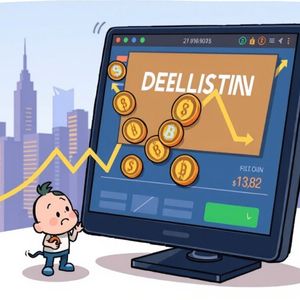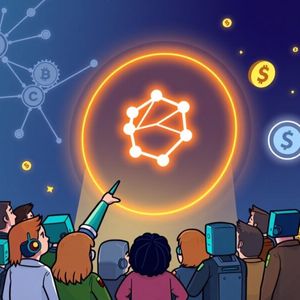BitcoinWorld Crucial Binance Delisting: What Happens to Your FDUSD Pairs? In the fast-paced world of cryptocurrency, staying updated is not just good practice, it is essential. A recent announcement from Binance, one of the world’s largest crypto exchanges, has sent ripples through the trading community. The news concerns a significant Binance delisting of several FDUSD margin pairs, a move that requires immediate attention from traders. On August 8 at 06:00 UTC, certain trading pairs will no longer be available for margin trading. This decision, while part of an exchange’s routine asset review process, has direct implications for those with open positions or plans to trade these specific assets. Understanding the details of this Binance delisting is key to navigating the changes effectively and protecting your investments. Which FDUSD Pairs Are Affected by This Binance Delisting? Binance has been clear about which pairs are slated for removal. The exchange specified that both cross and isolated margin trading will be affected for some, while others will see changes only in cross margin trading. This distinction is important for traders to note, as it determines the scope of the impact on their current strategies. Trading Pair Margin Type Affected Delisting Date/Time (UTC) DOGS/FDUSD Cross & Isolated Margin August 8, 06:00 PEOPLE/FDUSD Cross & Isolated Margin August 8, 06:00 MOVE/FDUSD Cross Margin Only August 8, 06:00 MANTA/FDUSD Cross Margin Only August 8, 06:00 It is important to understand the implications for each type of margin. Cross margin uses all available assets in a margin account as collateral to prevent liquidation. Isolated margin, on the other hand, restricts the collateral to a specific amount designated for a single trading pair. The impact of this Binance delisting will vary depending on which type of margin you are using for these pairs. Why Does Binance Delist Trading Pairs, and What Does it Mean for Your Portfolio? Crypto exchanges like Binance regularly review their listed assets to maintain a healthy and efficient trading environment. This process often involves evaluating factors such as liquidity, trading volume, stability, and the overall project’s development and compliance with regulatory standards. A Binance delisting can occur for several reasons, including: Low Liquidity: Insufficient trading volume can make it difficult for users to enter or exit positions without significant price impact. Project Performance: If a project fails to meet Binance’s performance metrics or its development slows down considerably. Regulatory Compliance: Changes in regulations or a project’s inability to comply with existing rules can lead to delisting. User Feedback: Community sentiment and feedback can also play a role in these decisions. For your portfolio, a delisting means that you will no longer be able to open new margin positions for the affected pairs after the specified date. Any existing positions will be automatically settled or closed by the exchange. This can lead to forced liquidations if not managed proactively, potentially incurring losses. What Actionable Steps Should You Take Regarding This Binance Delisting? If you hold positions in any of the affected FDUSD margin pairs, taking immediate action is crucial to mitigate potential risks. Binance typically provides a grace period, but proactive management is always the best approach. Here are the key steps you should consider: Close Positions Manually: Before the delisting time, it is highly recommended to close any open DOGS/FDUSD, PEOPLE/FDUSD, MOVE/FDUSD, or MANTA/FDUSD margin positions. This allows you to control the timing and price of your exit, rather than relying on automatic settlement by the exchange. Transfer Assets: If you have assets tied to these pairs in your margin wallet, consider transferring them out to your spot wallet or another suitable wallet. While the underlying assets (DOGS, PEOPLE, MOVE, MANTA, FDUSD) are not being delisted from spot trading, their availability for margin trading will cease. Monitor Announcements: Always keep an eye on Binance’s official announcements page for any further updates or clarifications regarding the Binance delisting or other platform changes. Review Trading Strategy: Use this opportunity to review your overall margin trading strategy. Diversifying your portfolio and understanding the risks associated with various assets and trading methods can help you prepare for future market shifts. Failing to take action could result in your positions being automatically closed at market price, which might not be favorable, especially in volatile market conditions. Be prepared to act before the August 8 deadline. Understanding FDUSD in the Context of This Binance Delisting FDUSD, or First Digital USD, is a relatively new stablecoin pegged to the US dollar. It aims to provide a stable digital asset for transactions, trading, and hedging against crypto market volatility. Binance has been actively promoting FDUSD, integrating it into various trading pairs, including margin pairs. The Binance delisting of these specific FDUSD margin pairs does not indicate a broader issue with FDUSD itself, but rather a re-evaluation of the specific altcoin pairs it is matched with for margin trading. Stablecoins play a vital role in the crypto ecosystem, offering a bridge between fiat currencies and volatile digital assets. While these specific margin pairs are being removed, FDUSD will likely continue to be a prominent stablecoin on Binance for spot trading and other services. This reinforces the need for traders to differentiate between the stablecoin itself and the specific trading pairs it is part of. What Are the Broader Implications of a Binance Delisting for the Crypto Market? While this specific Binance delisting involves a handful of pairs, such actions by major exchanges can sometimes signal broader trends or shifts within the crypto market. They underscore the dynamic nature of digital asset trading and the importance of liquidity and project viability. For the crypto market as a whole, delistings are a natural part of its maturation. They help to filter out less viable or less liquid projects, encouraging healthier market conditions over time. It also highlights the responsibility of exchanges to maintain a robust and compliant trading environment for their users. Traders should view such events as reminders to conduct thorough research and manage risk diligently across all their crypto holdings. In conclusion, the upcoming Binance delisting of specific FDUSD margin pairs on August 8 is a critical event for affected traders. By understanding which pairs are impacted, why such decisions are made, and what actionable steps to take, you can navigate this change smoothly. Proactive management of your positions and staying informed through official channels are your best tools in the ever-evolving crypto landscape. Always prioritize risk management and ensure your trading strategies align with the latest market developments and exchange policies. This post Crucial Binance Delisting: What Happens to Your FDUSD Pairs? first appeared on BitcoinWorld and is written by Editorial Team















